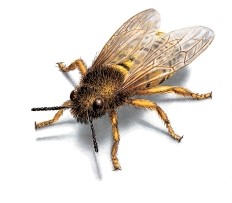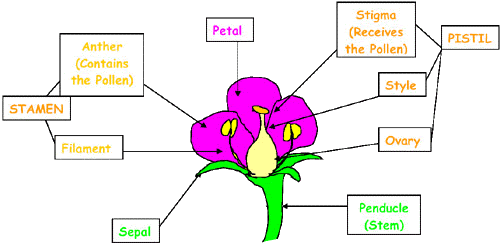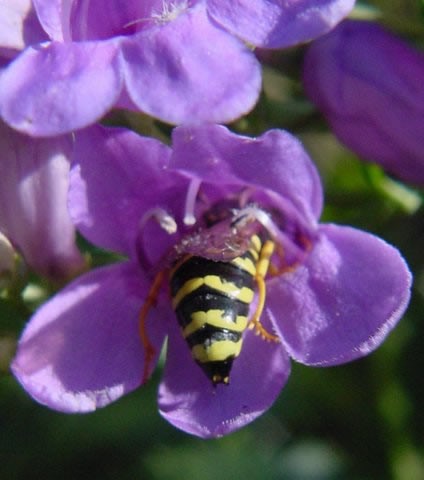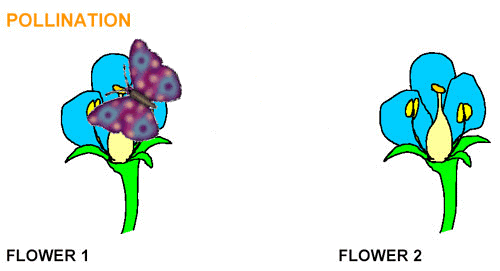Bees
Facts, Identification & Control
Latin Name
Order Hymenoptera
Super-family Apoidea
Appearance / Identification

What Do They Look Like?
Bees are winged insects with more than 20,000 recorded species found globally.
- Length: Megachile pluto, the largest of these creatures, is reported to be 3.9 cm long, while Perdita minima, the most diminutive of bees, are shorter than 2 mm long.
- Color: Bees can be black or brown with red, yellow or lustrous blue stripes.
How Did I Get Bees?
Bees sometimes make their way into homes while looking for a place to nest. The insects prefer dark and protected areas, so wall voids or chimneys often fit their needs. Any living space exposed to the outside is at risk for bee infestations. Some species that nest in wall voids fly inside the living space through baseboards, electrical outlets, and cracks in walls.
How Serious Are Bees?
STINGS
While bees can benefit the environment in many ways, it is inconvenient and possibly dangerous to let a bee hive thrive near your home. In general, bees only sting to protect themselves or defend a nest. Most stings are only mildly painful, but some people may have an allergic reaction.
Problems with Honey
Hives filled with honey inside wall voids may ferment over time. This can:
- Attract other insects
- Damage support structures
- Stain surrounding structures
Bee Behavior
Bee behavior refers to what bees do-as individuals and as a colony. By studying their behavior, we may learn how to change it to our benefit.
Two practical discoveries of bee behavior made our beekeeping of today possible. One was the discovery by Langstroth of bee space. The other was the discovery by G. M. Doolittle that large numbers of queens could be reared by transferring larvae to artificial queen cups. The discovery of the “language” of bees and of their use of polarized light for navigation has attracted considerable interest all over the world.
Much has been learned about the behavior of insects, including bees, in recent years. As an example, the term “pheromone” had not been coined in 1953, when Ribbands summarized the subject of bee behavior in his book, The Behaviour and Social Life of Honeybees. A pheromone is a substance secreted by an animal that causes a specific reaction by another individual of the same species. Now many bee behavior activities can be explained as the effect of various pheromones.
Recently, we have learned how certain bee behavior activities are inherited, and this information gives us a vast new tool to tailor-make the honey bee of our choice. Further studies should reveal other ways to change bees to produce specific strains for specific uses.
The Honey Bee Colony
The physical makeup of a colony has been described. An additional requirement of a colony is a social pattern or organization, probably associated with a “social pheromone.” It causes the bees to collect and store food for later use by other individuals. It causes them to maintain temperature control for community survival when individually all would perish. Individuals within the colony communicate with each other but not with bees of another colony. Certain bees in the colony will sting to repel an intruder, even though the act causes their death. All of these, and perhaps many other organizational activities, probably are caused by pheromones.
There is no known governmental hierarchy giving orders for work to be done, but a definite effect on the colony is observed when the queen disappears. This effect seems to be associated with a complex material produced by the queen that we refer to as “queen substance.” There also is evidence that the worker bees from 10 to 15 days old, who have largely completed their nursing and household duties but have not begun to forage, control the “governmental” structure. Just what controls them has not been determined.
These and many other factors make an organized colony out of the many thousands of individuals.
What is Pollination?

Pollination is the act of transferring pollen grains from the male anther of a flower to the females stigma. The goal of every living organism, including plants, is to create offspring for the next generation. One of the ways that plants can produce offspring is by making seeds. Seeds contain the genetic information to produce a new plant. Flowers are the tools that plants use to make their seeds. The basic parts of the flower are shown in the diagram below.
Seeds can only be produced when pollen is transferred between flowers of the same species. A species is defined a population of individuals capable of interbreeding freely with one another but because of geographic, reproductive, or other barriers, they do not interbreed with members of other species.


How does pollen get from one flower get from one flower to another?
Flowers must rely on vectors to move pollen. These vectors can include wind, water, birds, insects, butterflies, bats, and other animals that visit flowers. We call animals or insects that transfer pollen from plant to plant “pollinators”.
Pollination is usually the unintended consequence of an animal’s activity on a flower. The pollinator is often eating or collecting pollen for its protein and other nutritional characteristics or it is sipping nectar from the flower when pollen grains attach themselves to the animal’s body. When the animal visits another flower for the same reason, pollen can fall off onto the flower’s stigma and may result in successful reproduction of the flower.
Referring to the animated image, pollen from the anthers of Flower 1 is deposited on the stigma of Flower 2. 0nce on the stigma, pollen may “germinate,” which means that pollen tube forms on the sticky surface of the stigma and grows down into the ovule of the plant.

This growth can result in:
- Successful fertilization of the flower and the growth of seeds and fruit or,
- A plant can be only partially fertilized, in which the fruit and/or seeds do not fully develop; or,
- The plant can completely fail to be pollinated, and may not reproduce at all.
Plants can be:
- Self-pollinating – the plant can fertilize itself; or,
- Cross-pollinating – the plant needs a vector (a pollinator or the wind) to get the pollen to another flower of the same species
Swarming is the process by which a new honey bee colony is formed when the queen bee leaves the colony with a large group of worker bees. In the prime swarm, about 60% of the worker bees leave the original hive location with the old queen. This swarm can contain thousands to tens of thousands of bees. Swarming is mainly a spring phenomenon, usually within a two- or three-week period depending on the locale, but occasional swarms can happen throughout the producing season. Secondary afterswarms, or cast swarmsmay happen. Cast swarms are usually smaller and are accompanied by a virgin queen. Sometimes a beehive will swarm in succession until it is almost totally depleted of workers.
Swarming is a honey bee colony’s natural means of reproduction. In the process of swarming, the original single colony reproduces to two and sometimes more colonies. For instance, one species of honey bee that participates in such swarming behavior is Apis Cerana.The reproduction swarms of this species settle 20–30 m away from the natal nest for a few days and will then depart for a new nest site after getting information from scout bees. Scout bees search for suitable cavities in which to construct the swarm’s home. Successful scouts will then come back and report the location of suitable nesting sites to the other bees. Apis mellifera participates in a similar swarming process.